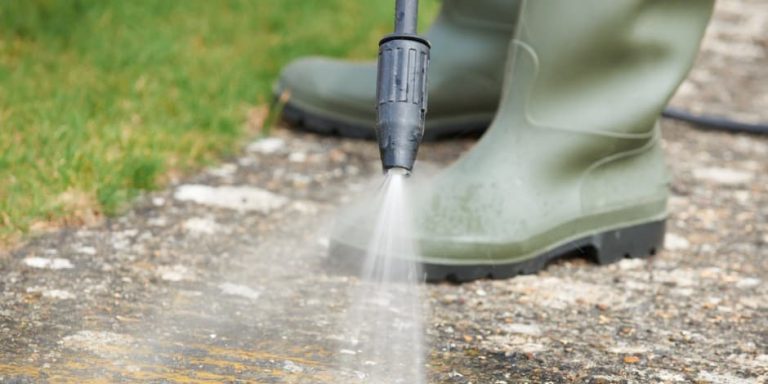
Power washing is often associated with cleanliness, restoration, and visual appeal—but when it comes to historic natural landmarks, this high-pressure technique can pose serious risks. From rock formations to stone monuments, national parks to heritage trails, improper cleaning with power washers can damage surfaces, disrupt ecosystems, and erase history in ways that are irreversible.
Let’s explore how pressure washing affects historic natural sites and what alternatives exist to protect these irreplaceable treasures. 🌍
🏛️ What Are Historic Natural Landmarks?
Historic natural landmarks are protected environments or features that hold:
- Geological importance (e.g., ancient rock formations, fossil beds)
- Cultural or historical value (e.g., native petroglyphs, stone structures)
- Scenic and ecological relevance (e.g., canyons, coastal cliffs, waterfalls)
These landmarks often include:
- Natural stone paths and viewing platforms
- Rock faces with carvings or engravings
- Wooden boardwalks or historical signage
- Sculpted or weathered features with centuries of erosion
💦 Why Power Washing Is Risky
Pressure washers can reach up to 4,000 PSI, which is enough to:
- Etch stone or sandstone
- Remove protective patinas or weathered textures
- Erode soft rock like limestone or shale
- Dislodge sediment layers containing historical or fossil records
- Strip away lichen, moss, or microflora that are part of the ecosystem
Even when the cleaning intention is to beautify or maintain, the force and runoff can severely degrade natural surfaces or disrupt the surrounding ecology.
❌ Common Mistakes Made
Some well-meaning restoration or volunteer crews make the mistake of using power washers in places like:
- Ancient trail markers or indigenous rock art sites
- Civilian memorials constructed with aged bricks or mortar
- Natural lookout points with fragile sedimentary rock
- Coastal areas where erosion is already a major concern
The damage isn’t always immediate—but over time, repeated washing can create deep grooves, wash away mineral layers, and permanently alter the landscape.
🧪 Runoff and Chemical Contamination
Beyond physical abrasion, runoff from detergents or even plain water can lead to:
- Algae blooms in nearby ponds or lakes
- Chemical leaching into porous rock
- Staining of protected surfaces due to mineral deposits
- Soil disruption that causes root exposure in nearby plant life
🐾 Impact on Surrounding Ecosystems
Power washing near natural landmarks doesn’t just affect stone. Runoff can:
- Disrupt microbial life living on rocks or in soil
- Deter or harm local wildlife such as insects, birds, and amphibians
- Create slick conditions that are dangerous to visitors
- Introduce non-native chemicals that alter water quality
The ripple effects can extend far beyond the cleaned area itself.
✅ Best Practices for Preservation
If cleaning is absolutely necessary, consider these alternatives:
🧽 1. Manual Cleaning
Use soft brushes, non-abrasive pads, and plain water for light grime. It’s slower, but much safer.
🌿 2. Use Eco-Safe Detergents
Only apply non-toxic, biodegradable agents approved for natural and historic surfaces—and sparingly.
Browse Amazon Here For Eco-Friendly Pressure Washing Detergents
🚫 3. Avoid Pressure Above 1,000 PSI
If pressure is necessary, keep it low and use a wide-angle nozzle to spread force gently.
📷 4. Survey and Document Before Cleaning
Work with historians, geologists, or ecologists to record the site’s condition and determine if cleaning is even advisable.
🛑 5. Know When to Leave It Alone
Not all dirt needs to be removed. Some discoloration or growth is part of a landmark’s natural character and doesn’t require intervention.
🏞️ Real-World Case Studies
- Petroglyph National Monument (New Mexico) prohibits power washing entirely due to risks to indigenous carvings.
- Muir Woods (California) uses volunteer brushing crews and avoids chemical cleaners to protect redwood root systems.
- Coastal cliffs in Maine saw an increase in rock slides after aggressive cleaning eroded the base—cleaning was later banned.
These examples show that good intentions must be balanced with preservation science. 🔬
📜 Legal and Ethical Considerations
In many cases, power washing a protected landmark without permission is not just risky—it’s illegal. Depending on the jurisdiction, you could face:
- Fines from the National Park Service or local preservation boards
- Criminal charges for destruction of property
- Lifetime bans from heritage sites
🌍 Final Thoughts
Historic natural landmarks are irreplaceable. Whether it’s a centuries-old rock carving or a fragile geological wonder, power washing must be approached with caution—or avoided entirely. The goal should never be just “clean,” but “conserved.”
Because once history is blasted away, you can’t power wash it back. 🧼❌🏞️
Browse Amazon Here For Popular Pressure Washers And Accessories






